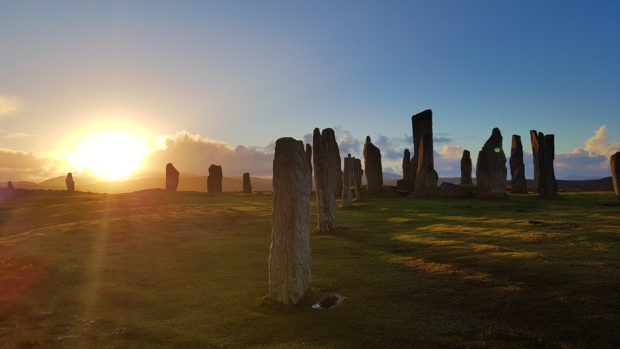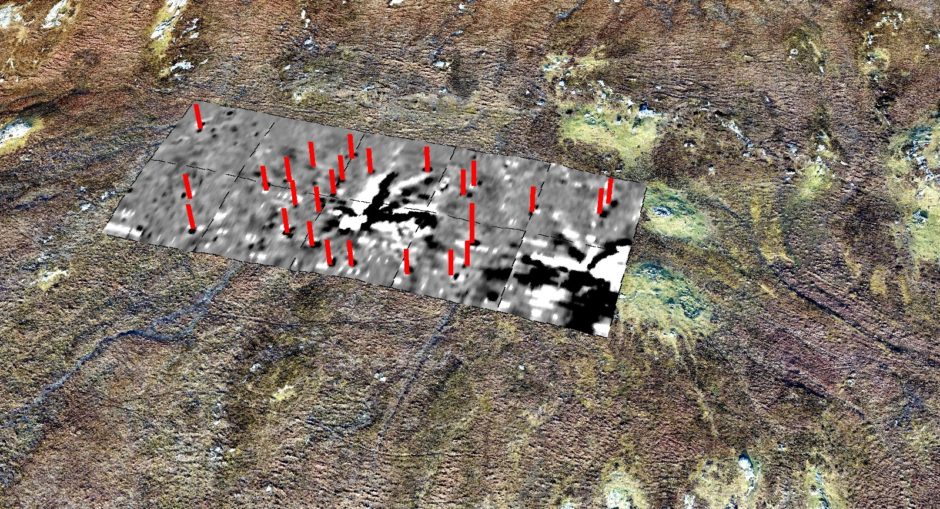New evidence of a massive lightning strike at the centre of a hidden stone circle in the Outer Hebrides may help shed light on why these monuments were created thousands of years ago.
The Calanais Virtual Reconstruction Project, a joint venture led by St Andrews University with the Urras nan Tursachan and the University of Bradford, has uncovered a potential link between ancient stone circles and the forces of nature.
While studying prehistoric Tursachan Chalanais, the main stone circle at Calanais on the Isle of Lewis, the project team surveyed nearby satellite sites to reveal evidence for lost circles buried beneath the peat.
One rarely-visited site surveyed, known as Site XI or Airigh na Beinne Bige, now consists of a single standing stone on an exposed hillside overlooking the great circle.
Geophysics revealed that not only was the stone originally part of a circle of standing stones, but also that there was a massive, star-shaped magnetic anomaly in the centre – either the result of a single, large lighting strike or many smaller strikes on the same spot.
Project leader Dr Richard Bates, of the School of Earth and Environmental Sciences at the University of St Andrews, said: “Such clear evidence for lightning strikes is extremely rare in the UK and the association with this stone circle is unlikely to be coincidental.
“Whether the lightning at Site XI focused on a tree or rock which is no longer there, or the monument itself attracted strikes, is uncertain.
“However, this remarkable evidence suggests that the forces of nature could have been intimately linked with everyday life and beliefs of the early farming communities on the island.”
The researchers were also able to virtually recreate another nearby circle, with the help of the Smart History team based in the University of St Andrews School of Computer Science, which had been lost with its stones either buried or lying flat.
Known as Na Dromannan, careful scanning of the stones allowed a full 3D model to be built allowing the passage of the sun and moon around this circle to be tracked for the first time in four millennia.
Dr Bates added: “For the first time in over 4000 years the stones can now be seen and ‘virtually’ walked around.
“Everyone will be able to visit this remote site and get a real sense of what it was like just after it had been constructed.
“We have only just scratched the surface of this landscape and already we can get a feel for what might be buried out there waiting for discovery.”
The team hopes to return to Lewis next year to undertake further surveys both on land, and in the waters, around the Tursachan at Calanais, where the old landscape has been flooded by rising sea levels.
Dr Tim Raub, of the School of Earth and Environmental Sciences at the University of St Andrews, added: “This evidence is rare because lighting strikes are conducted along the top ‘skin’ of the Earth’s surface.
“The clarity of the strike suggests we are looking at events before the peat enveloped the site, more than 3000 years ago.”
Some of the research findings will be available to see at the Calanais Visitor Centre, on the isle of Lewis in 2020.
A video of the project is available via https://vimeo.com/273858929.











